Ragdoll cats are known for their stunning blue eyes, silky coats, and notably calm demeanor. But how does this reflect in their vocal habits? When curious minds wonder about Ragdoll cat noises, they often uncover a world of soft meows, gentle purrs, and occasional chattering that defies the louder, more persistent calls of other feline breeds.
The melody of Ragdoll cat noises is a symphony played on the softer side of the scale, revealing their feelings and desires in a way that’s as gentle as their nature.
Contrary to popular belief, Ragdoll cats do communicate; they just prefer a quieter tone compared to other talkative breeds. This peaceful breed uses its voice to express a range of emotions, from the excitement of seeing a bird outside the window to the contentment of snuggling up in their favorite human’s lap.
Their vocalizations are an integral part of their charming personality, though they often choose to speak up mostly when it’s absolutely necessary—making every purr, meow, or chirp a moment worth paying attention to.
Understanding the reason behind noises your ragdoll make can be a delightful journey. Each vocalization serves a purpose, whether it’s a meow to greet you at the door or a soft purr as they drift to sleep.
For families and individuals seeking a companion whose communication style is as laid-back as their personality, the Ragdoll cat’s vocal repertoire will fit seamlessly into tranquil household symphonies.
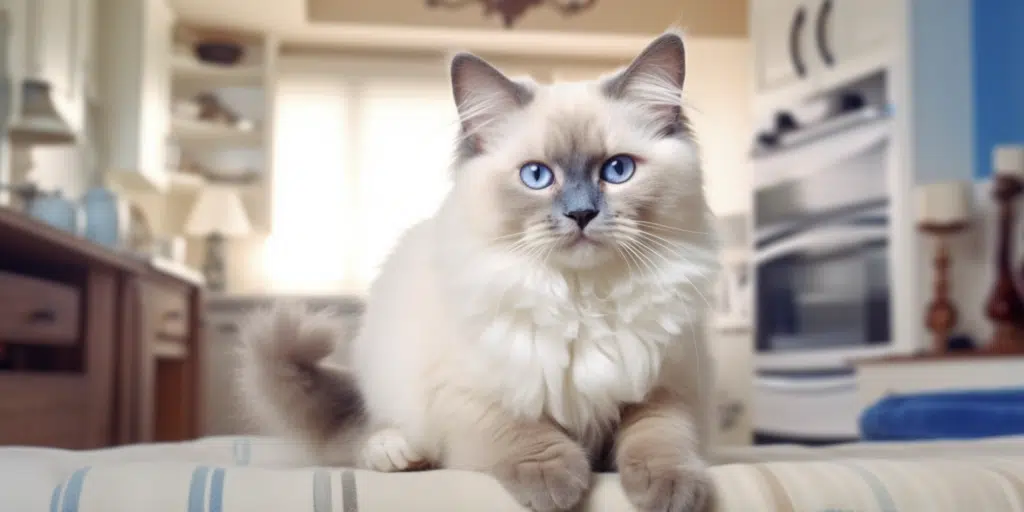
Are Ragdolls Vocal Cats?
Ragdolls are considered one of the quieter breeds in the feline world. They possess a serene and gentle demeanor that extends to their vocal behavior. They are more likely to use body language or simply enjoy your company in silence rather than start a chat.
Gender does not significantly impact the noise level of Ragdolls, with both males and females showing a similar range of vocalizations. However, individual personality factors heavily into how vocal a Ragdoll might be.
Some may express their needs or desires more frequently than others, but this is less about the cat’s gender and more about their unique character.
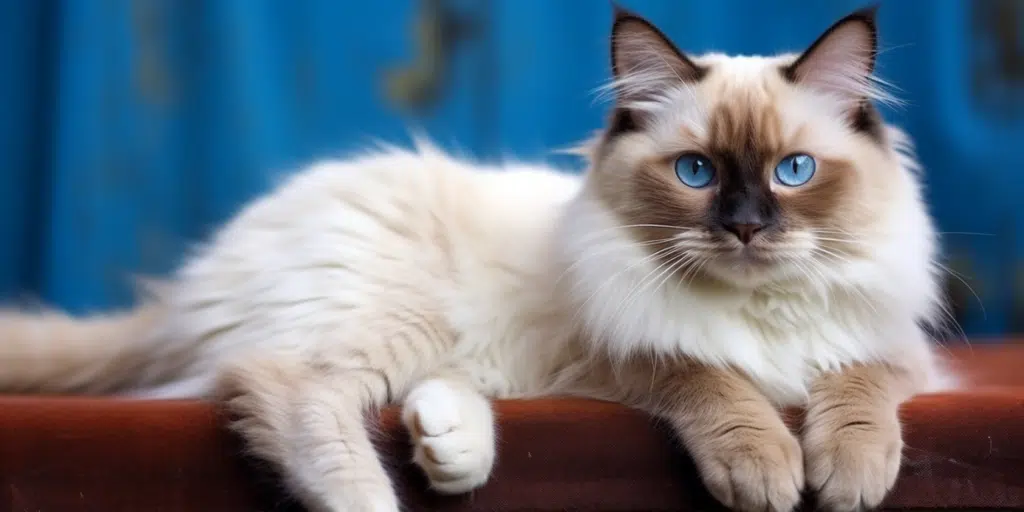
Factors That Influence Their Noise Levels
Activity and exercise levels can influence their vocalizations. A more active Ragdoll might be less inclined to vocalize excessively, as they’re busy exploring and playing.
In contrast, a Ragdoll with fewer stimulation opportunities might use their voice more to seek attention or express boredom.
However, given their laid-back nature, Ragdolls, on the whole, tend to stay on the quieter side of the spectrum, regardless of their activity levels.
Their Age
Young Ragdoll kittens are naturally more vocal as they learn to communicate with their humans and express their needs. This stage is crucial for bonding and understanding the nuances of their voices.
As Ragdolls grow into adulthood, their vocalizations tend to mellow, mirroring their calm and placid temperament. Adult Ragdolls are much quieter, often vocalizing only when necessary, such as at meal times or when seeking attention.
Senior Ragdolls may experience changes in their vocal behavior due to physical or cognitive changes. Some may become more vocal, expressing confusion or discomfort if they’re experiencing age-related issues such as vision loss or cognitive decline.
Understanding these changes can help owners provide better care and reassurance to their aging companions.
Age-related vocal changes in Ragdolls highlight the importance of attentive listening. By tuning in to the shifts in their vocal patterns over the years, owners can respond more effectively to their pet’s needs, ensuring their well-being at every life stage.
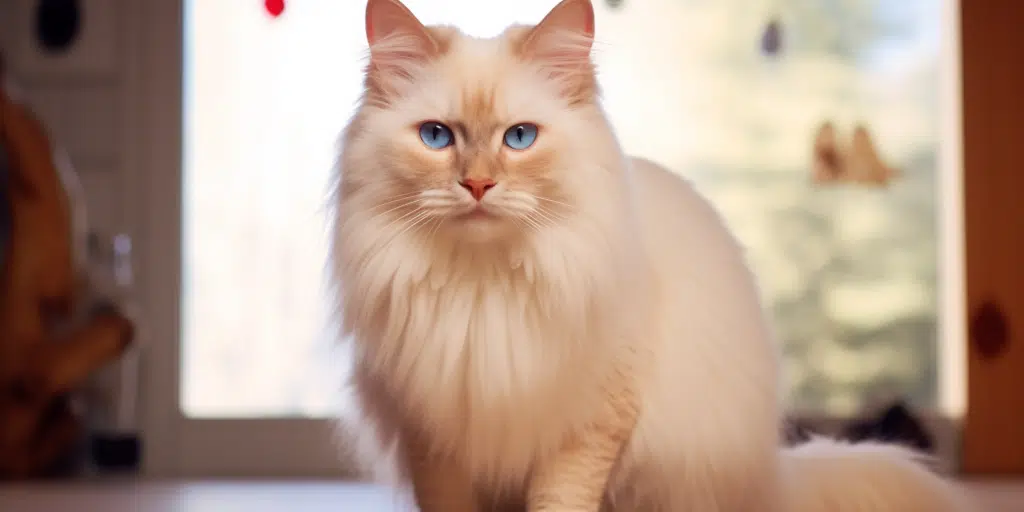
Feeding Ragdolls and Its Relation to Noise Levels
Feeding habits and schedules play a significant role in influencing the vocal behavior of Ragdolls. A regular and consistent feeding routine can help minimize vocal demands for food, as your Ragdoll learns to trust that their needs will be met on time.
On the other hand, irregular feeding times might lead to an increase in vocalizations as your cat tries to communicate their hunger.
Choosing the right diet and meal portions is also crucial. A well-fed Ragdoll with a nutritionally balanced diet is likely to be a quieter companion, content with their meals and less inclined to voice complaints or demands.
Conversely, a diet lacking in essential nutrients might lead to a more vocal cat seeking attention for their unmet dietary needs.
Understanding your Ragdoll’s feeding preferences and observing their vocal behavior around meal times can offer insights into how well their dietary needs are being satisfied. Listening and watching for cues can help fine-tune meal plans, ensuring a happy, healthy, and quieter Ragdoll.
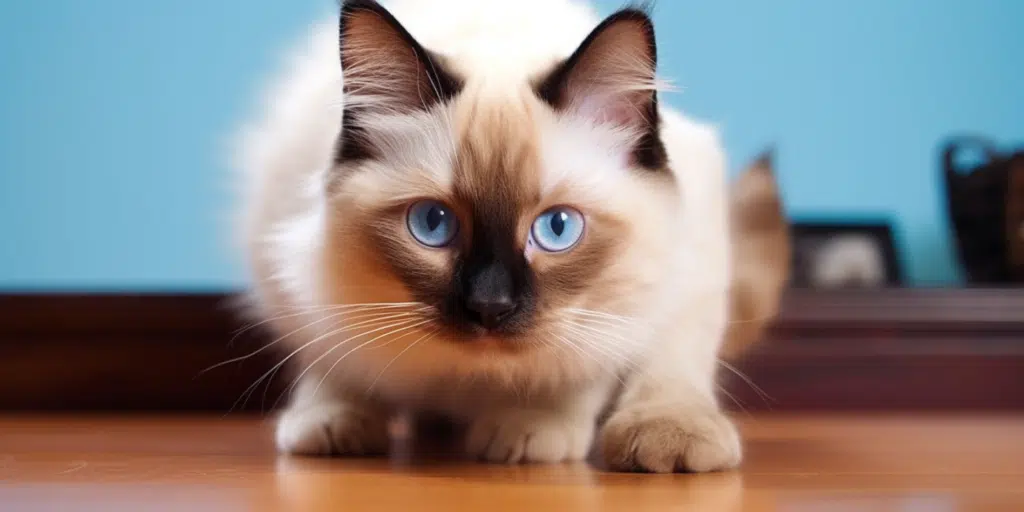
Ragdoll Exercise Level Affects Their Noise Levels
Regular play and exercise are important for Ragdolls, not only for their physical health but also for keeping their vocalizations in check. A Ragdoll with plenty of stimulation and activity opportunities is less likely to express boredom or frustration through increased vocalizing.
Engaging toys, climbing trees, and interactive play sessions can provide the necessary mental and physical stimulation.
A sedentary lifestyle can lead to a variety of issues, including increased vocalizations. Without adequate channels for their energy, Ragdolls may resort to meowing or other sounds to capture their human’s attention or to express their dissatisfaction with the lack of activity.
Encouraging regular playtimes and providing a stimulating environment can significantly impact your Ragdoll’s vocal behavior. A satisfied and engaged Ragdoll is a quieter one, content with their realm of exploration and interaction within the safety of their home.
Medical Conditions
Health issues can lead to an increase in vocalizations in Ragdolls as a way of signaling discomfort or pain to their owners. Regular veterinary checks are essential to catch any early signs of illness, as cats are adept at hiding their symptoms. A change in vocal behavior may be one of the first noticeable signs that something is amiss.
Dental problems, arthritis, and other common ailments in cats can cause discomfort, leading to more vocal expressions of pain or unease. Being attentive to these changes and seeking veterinary advice can help address underlying health conditions before they become more serious.
Preventive care and attention to changes in vocalizations can significantly contribute to your Ragdoll’s overall well-being. It’s crucial to listen closely and observe any shifts in their usual communication patterns, as these could be vital clues to their health status.
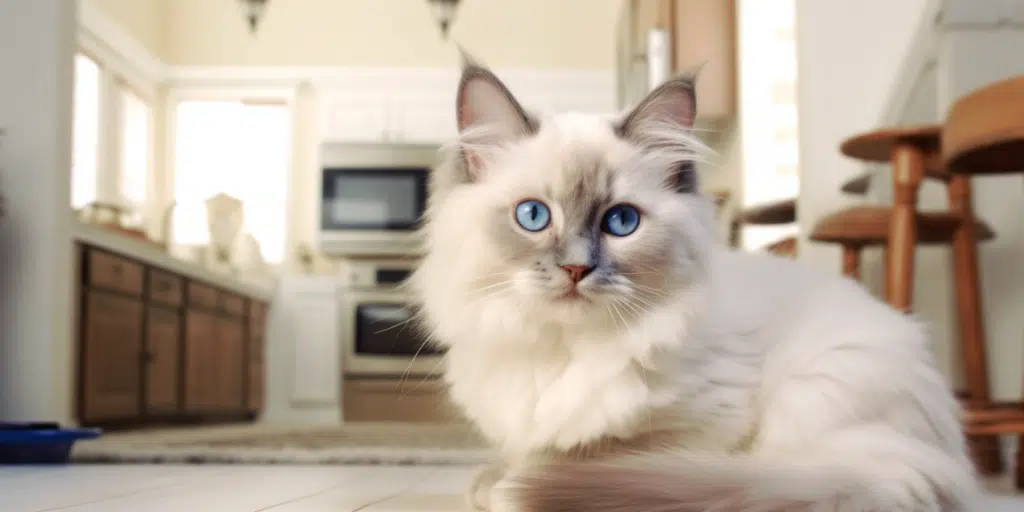
Ragdoll Cat Noises and Their Meaning
Understanding the different noises your Ragdoll makes is pivotal in strengthening the bond between you and your feline friend. Each sound carries its own set of meanings, helping you better cater to their needs and emotional state.
Recognizing these vocal cues allows for a more empathetic and responsive relationship, ensuring your Ragdoll feels heard and loved.
Meow (The Most Common Noise)
The meow is the most recognizable Ragdoll cat noise, serving various purposes from greetings to requests for attention or food. In Ragdolls, meows are often soft and gentle, reflecting their calm personality.
A meow can signify anything from a simple hello to a reminder that it’s mealtime, making it a versatile tool in their vocal arsenal.
Purring (The Most Enjoyable Cat Noise)
Purring is one of the most endearing sounds Ragdoll cats make, commonly associated with contentment and relaxation.
However, it’s also a self-soothing mechanism during moments of discomfort. Listening to your Ragdoll’s purr can be a soothing experience, indicative of their trust and affection towards you.
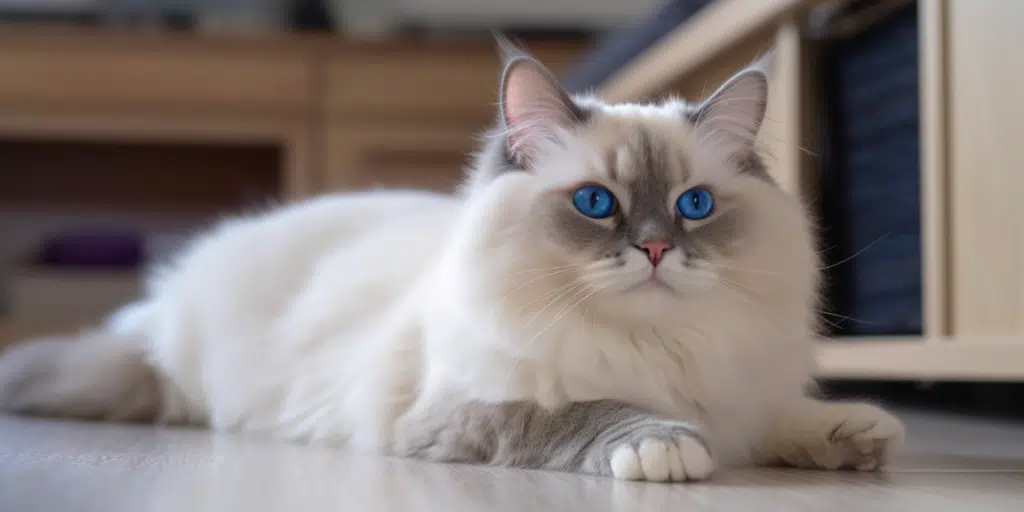
Hissing (Your Cat Feels In Danger)
While less common in the even-tempered Ragdoll, hissing can occur when they feel threatened or scared. It’s a defensive noise, signaling a desire for space and safety. Recognizing and respecting this boundary is important in maintaining trust and comfort.
Yowl (Not a Happy Meow)
Yowling is a longer, more drawn-out sound than a meow and can indicate distress, discomfort, or mating calls. In Ragdolls, it may signal a need for attention due to discomfort or confusion, especially in older cats.
Growls (Not as Scary as a Tiger)
Growling in Ragdolls is a clear sign of discomfort or fear. It’s less about aggression and more about expressing unease. Understanding and addressing the cause of the growl can help reassure and calm your Ragdoll.
Some Cats are More Talkative Than Others
Individual personalities play a significant role in determining a Ragdoll’s vocal behavior. While the breed is known for being less vocal, variances among individual cats can lead to a wider range of vocalization habits.
Observing and understanding these individual quirks can enhance the bond between you and your Ragdoll, catering to their unique communication style.
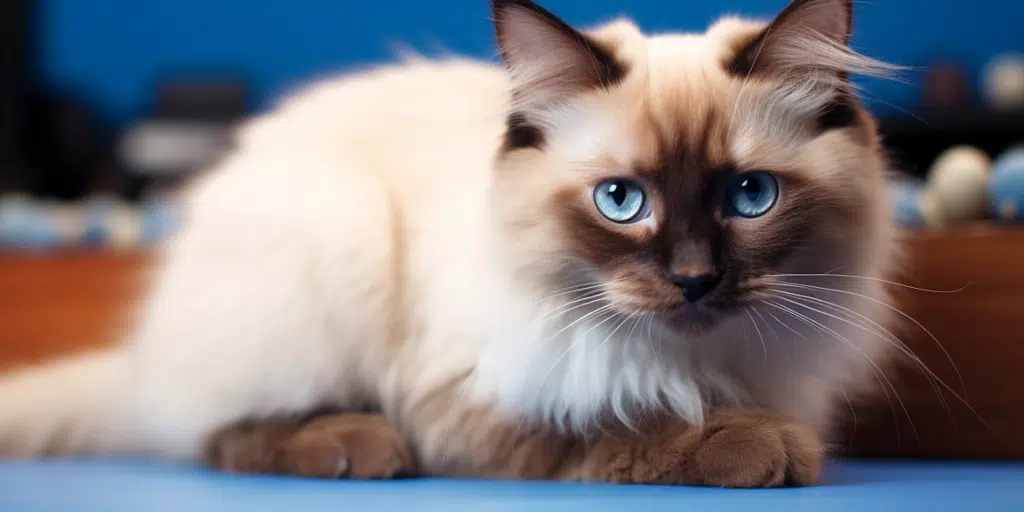
How to Make Ragdolls Less Vocal?
Ensuring your Ragdoll’s needs are met, providing them with adequate play and stimulation, and maintaining a peaceful environment can help minimize unnecessary vocalizations.
Recognizing and addressing the reasons behind their vocal behavior can lead to a quieter, happier cat. Regular veterinary care can also prevent health-related vocal expressions, keeping your Ragdoll in good health and spirits.
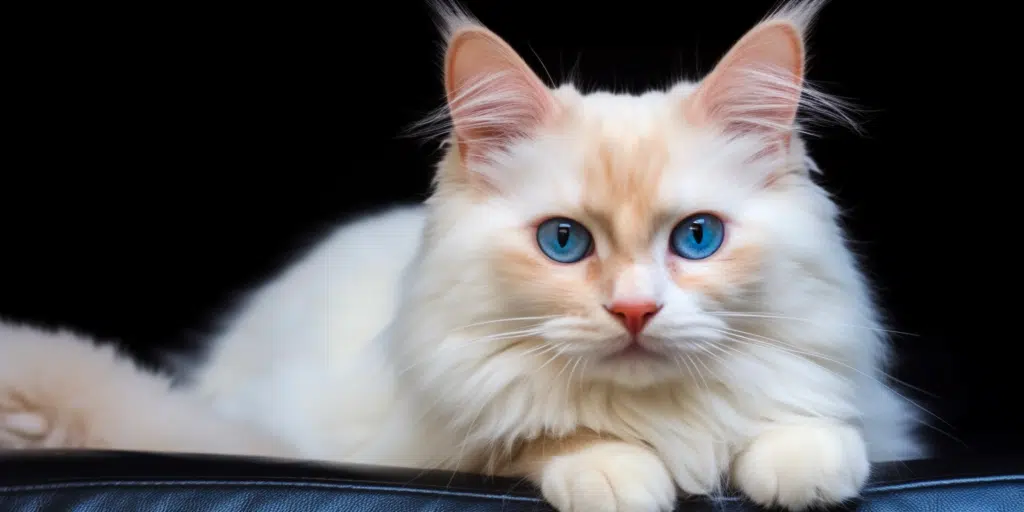
Conclusion
Ragdoll cats may not be the most vocal breed, but their gentle meows, purrs, and occasional chatter play a crucial role in their communication. Im Understanding and responding to their vocalizations can deepen the bond you share, creating a harmonious and loving relationship.
Whether it’s through a soft meow of greeting or a purring session on your lap, the sounds of a Ragdoll cat are a beautiful reminder of the unique, quiet connection they share with their humans.